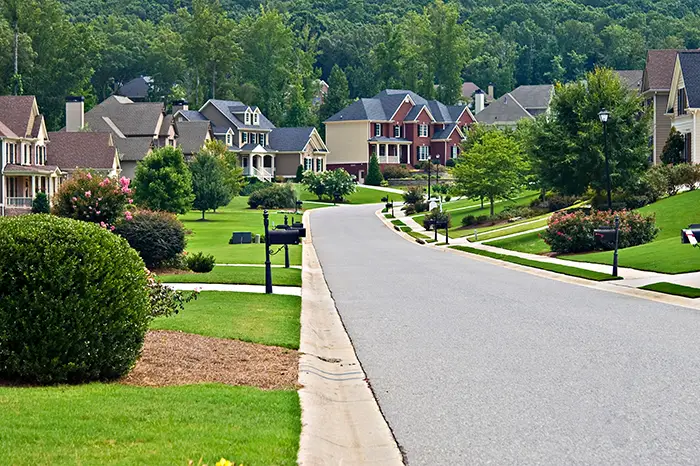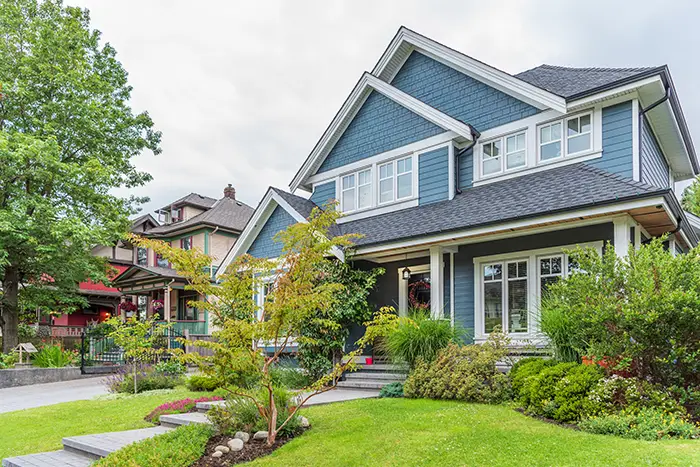Before grabbing a shovel or calling a tree service, it’s smart to get familiar with the HOA tree removal rules that apply across Southern California communities. A little upfront knowledge can help you avoid hefty fines, protect your property, and keep the peace with your neighbors.
Why Do HOAs Regulate Tree Removal?
Most HOAs here in Southern California spell out clear rules on tree removal. And they aren’t just there to keep the neighborhood looking polished, though that’s certainly part of the goal. The bigger picture? Managing risks, preserving property values, and steering clear of neighborly disputes.
Trees can stir up plenty of conflict. Imagine scenarios with roots wrecking sidewalks, branches leaning over fences, or a once-small sapling suddenly blocking a cherished mountain view. If every homeowner were to start chopping or altering trees without oversight, it would quickly throw the entire community out of balance.
That’s why HOA tree removal policies exist: they lay out clear expectations so homeowners know how to handle any tree-related issue that comes their way.
What Laws Apply to HOA Tree Removal?
Your HOA’s governing documents will have the main say here, but don’t forget that city and state laws also factor in. In California, many tree disputes are shaped by common law and sections of the California Civil Code.
A few legal points worth knowing:
- Encroaching branches and roots: Under California Civil Code Sections 833 and 834, a homeowner owns the part of the tree trunk that sits on their property. If a neighbor’s branches or roots creep across your line, you’re typically allowed to trim them, but only back to your side and only in a way that doesn’t harm the tree’s health.
- View ordinances: Some cities in Southern California, especially along the coast, have “view protection” ordinances. If a tree blocks a scenic view, you might have recourse, but these rules vary wildly from one city to the next.
- Protected trees: Many cities protect particular species or designate “heritage” trees. Removing one, even on your own land, may require a city-issued permit.
And when you’re dealing with trees on HOA common areas, these laws layer over whatever’s written into the HOA rules.
Which Rules Are Followed: HOA or City/State Law?
Both. It’s not a question of one over the other. You need to follow both your HOA’s tree policies and any applicable city or state laws. HOA rules are often stricter than local codes, especially when the community’s appearance is a priority.
Let’s say your HOA’s governing documents say that no tree can be removed without approval, even if the city would allow it with a permit. You’re still bound to the HOA’s process.
And remember: these rules typically apply whether the tree sits in a common area or on a private lot.
Can Homeowners Remove a Tree on Their Own Property?
Sometimes, but not always. That’s the short version.
In many Southern California HOAs, even trees on private lots fall under the community’s landscape standards. You usually can’t just take one down without getting HOA approval first.
Why? Because one person’s decision could affect the whole street. Think about property lines, roots creeping underground, or how that shady tree contributes to the neighborhood’s character.
So, you may ask, “Do I need HOA approval to remove a tree on my own lot?” The answer is most likely yes. Expect to:
- Fill out a tree removal request form or application
- Provide a valid reason (disease, safety hazard, damage)
- Wait for written approval before work begins
Boards typically weigh requests against the community’s architectural guidelines. Good reasons will usually get a green light.
What About Removing Trees from Common Areas?

This is more cut and dry: trees in common areas belong to the community. Homeowners can’t touch them. No trimming, no removal.
If you think a common area tree should go, the right move is to submit a request to the HOA. The board or landscape committee will review the situation, often consulting an arborist or city staff before making a call.
Common reasons for HOA-approved tree removal in these areas include:
- Disease or declining health
- Safety hazards (instability, proximity to buildings)
- Damage to sidewalks, roads, or utilities
- Non-compliance with city codes or protected tree lists
On the other hand, requests based purely on inconvenience (think blocked sunlight or falling leaves) are usually denied.
How to Make an HOA Tree Removal Request
The process varies a bit between communities, but generally, here’s how it works:
- Complete the HOA’s official request form (sometimes called an “architectural request” or “landscape change” request).
- Include current photos of the tree and the surrounding area.
- Clearly explain your reason: arborist report, root damage, structural concerns, etc.
- Submit to the HOA board or designated committee for review.
Most boards will consider both the community’s standards and any legal requirements (including California tree law). If your case involves protected species or tricky property lines, the HOA may pull in legal counsel or an arborist to avoid liability.
If your community is large or works with a professional management company, a quick call to your property manager can help make sure your request lands in the right hands.
When a Neighbor’s Tree Causes Problems
Things get a bit more delicate when another homeowner’s tree is the issue. HOA tree rules don’t give you the right to trim—or worse, remove—someone else’s tree. So what can you do?
- If the tree is on private property but causing evident damage (roots cracking a wall, branches damaging your roof), bring it to the HOA board. The board may require the owner to resolve the issue if it violates community rules.
- If the tree is in a common area, follow the usual HOA request process.
- If it’s a neighbor’s tree encroaching across your property line, you may trim branches or roots—but only up to your line and in a way that doesn’t harm the tree’s health (per California law).
If you’re unsure or if there’s any potential dispute over damage or boundaries, talking to an attorney first is always wise.
How HOA Tree Policies Help Avoid Disputes

Clear HOA tree removal policies help head off some of the most common neighborhood headaches:
- Unauthorized tree cutting that damages common property
- Neighbor complaints about blocked views or messy debris
- Liability from neglected, hazardous trees
- A patchy, inconsistent look across the community
By giving homeowners a clear path to follow, these policies help protect aesthetics, safety, and property values alike. And they save a lot of finger-pointing and hard feelings along the way.
Can the HOA Require You to Remove or Maintain a Tree?
Absolutely. If the board determines that a tree on your property is dead, dangerous, or violating landscaping rules, they can require you to address it. If you ignore that request, fines and enforcement can follow.
Many CC&Rs also require ongoing tree maintenance, including trimming branches, removing dead limbs, and controlling pests. These aren’t optional in most HOAs. And while it might feel like a chore, it ultimately protects your property and your neighbors’. Not to mention, well-maintained trees can boost curb appeal and market value.
Working With HOA Landscape Services
Once your tree removal gets the green light, there’s still one crucial piece: who does the work?
In some communities, the HOA has a contract with a specific landscaping company. If that’s the case, only that company is allowed to handle tree work. It helps ensure the job is done safely and meets all the community’s standards.
Other HOAs may let you hire your own tree service, but with a few conditions: they’ll need to be licensed, insured, and sometimes pre-approved by the board. This protects both you and the association from accidents or liability in the event that something goes wrong.
And here’s something worth remembering: bringing in a professional is always the wise choice. Taking down or even trimming a large tree isn’t a weekend project, no matter how many tools you have in the garage. The risks (to property, to people, to power lines) are real. It’s always better to let the pros handle it.
Tips Before Calling Tree Removal Services
Even after you’ve read the rules and submitted your request, a few extra steps can help things go smoothly:
- Document everything. Keep records of your request, approval, and any communication with the HOA. It’s a good safeguard in case questions come up later.
- Talk to your neighbours. If a tree borders another property, letting neighbours know about upcoming work helps avoid misunderstandings.
- Double-check contractor insurance. Even if your HOA has guidelines, it never hurts to confirm the tree service carries current liability and workers’ compensation coverage.
- Ask about stump removal. Some HOAs have rules about whether stumps must be ground out after tree removal—don’t assume it’s optional.
- Plan around community events or restrictions. Avoid scheduling major tree work during community events or on days when HOA maintenance crews may be on-site.
A little extra attention to detail can prevent surprises and keep your tree project hassle-free.
When in Doubt, Pause Before You Cut
Tree projects can be tricky in an HOA. If you’re ever unsure, take a breath and check with your board first. It’s an easy way to avoid fines, protect your property, and keep good neighborly vibes intact.
Need some professional help in running your HOA community? Personalized Property Management offers HOA management services around Southern California. Reach us at 760-325-9500 or email us at info@ppminternet.com for more information!
Related Articles:
